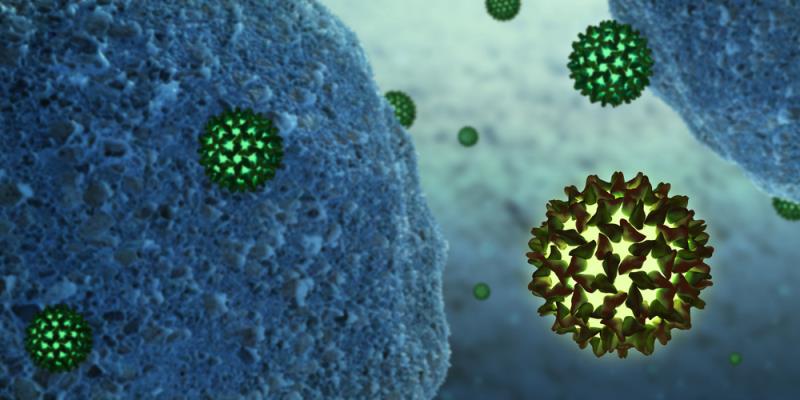Positive anti-HBc tied to cirrhosis, HCC in NAFLD patients





A recent study involving Chinese patients with nonalcoholic fatty liver disease (NAFLD) suggests that positive antihepatitis B core antibody (anti-HBc) is linked to cirrhosis and possibly hepatocellular carcinoma (HCC) and cirrhotic complications.
“In this large cohort of patients with biopsy-proven NAFLD, we show that positive anti-HBc was associated with cirrhosis independent of age and metabolic factors,” the researchers said. “Patients with positive anti-HBc also had a higher incidence of liver-related events.”
Overall, 489 patients with biopsy-proven NAFLD and 69 with NAFLD-related or cryptogenic HCC were included in this multicentre study. Anti-HBc was used to detect the previous hepatitis B virus (HBV) infection.
Positive anti-HBc correlated with lower steatosis grade but higher fibrosis stage in the biopsy cohort. Of the patients, 18.8 percent with positive and 7.5 percent with negative anti-HBc had cirrhosis, respectively (p<0.001). The significant association between anti-HBc and cirrhosis persisted even after adjusting for age and metabolic factors (adjusted odds ratio, 2.232, 95 percent confidence interval, 1.202–4.147). [Am J Gastroenterol 2020;115:867-875]
Furthermore, positive anti-HBc was associated with a higher incidence of HCC or cirrhotic complications (6.5 percent vs 2.2 percent; p=0.039) over a mean follow-up of 6.2 years. In addition, positive anti-HBc was present in 73.9 percent of patients with NAFLD-related or cryptogenic HCC. On the other hand, no association was found between antihepatitis B surface antibody and histological severity.
Several studies have also reported an association between positive anti-HBc and HCC in patients with chronic hepatitis C. [Gastroenterology 2004;126:102-110; J Hepatol 2013;59:696-700; J Clin Microbiol 2002;40:4068-4071; Hepatology 2011;54:434-442; Intervirology 2008;51:352-361; Scand J Gastroenterol 2008;43:849-856]
“Although all of our patients had negative serum HBV DNA, a few reasons may explain the association between anti-HBc positivity and HCC,” the researchers said.
“First, in all chronic liver diseases, the clinical outcome is determined not only by the current but also past disease activity. Patients with active hepatitis in the past could still accumulate more liver injury with increased risk of HCC,” they explained.
Second, those with positive anti-HBc often present with detectable HBV DNA or covalently closed circular DNA in the liver, even with negative serum HBV DNA. In addition, HBV DNA integration into the host genome occurs frequently in chronic HBV patients, persisting even after HB surface antigen seroclearance, according to the researchers. [Hepatology 2011;54:829-836]
“HBV DNA integration is one of the recognized mechanisms for HCC development,” they added. [J Hepatol 2016;64:S84-101]
Of note, patients with positive anti-HBc had lower body weight and body mass index, higher high-density lipoprotein cholesterol, and a trend toward lower triglycerides, suggesting that the metabolic factors were the main drivers of liver disease in those with negative anti-HBc, while both metabolic factors and previous HBV infection were responsible for liver injury in patients with positive anti-HBc, according to the researchers.
Additionally, “[b]ecause NAFLD-related HCC may develop in noncirrhotic patients, future studies should define the role of anti-HBc in selecting noncirrhotic patients with NAFLD for HCC surveillance,” they noted. [Clin Gastroenterol Hepatol 2011;9:428-433; Clin Gastroenterol Hepatol 2016;14:124-131.e1]